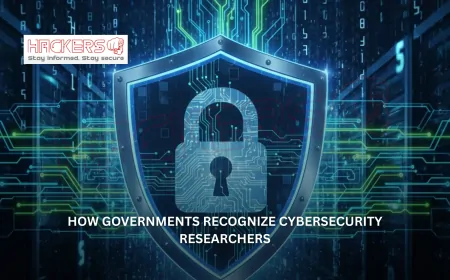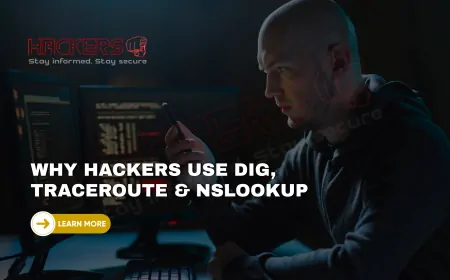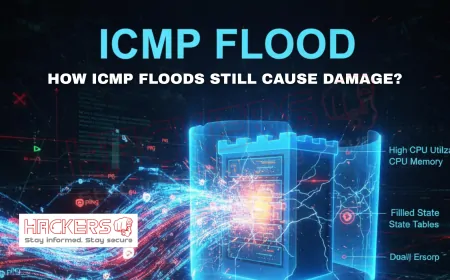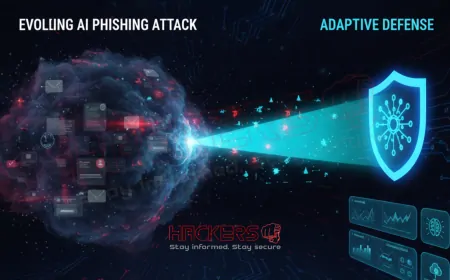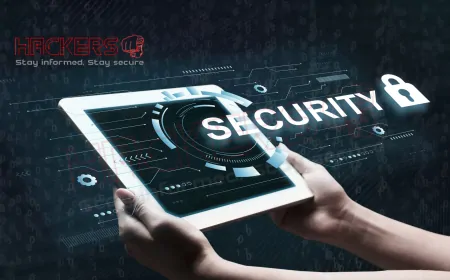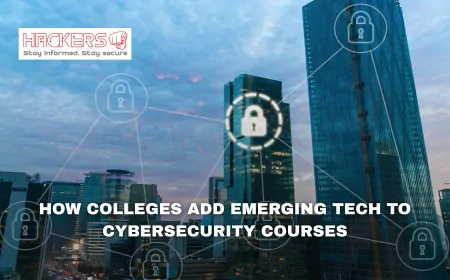How Do Smart Cities Manage IoT Security Challenges?
Imagine a city where traffic lights adjust in real time to ease congestion, streetlights dim when no one is around, and waste bins alert trucks when they're full. This is the promise of smart cities, powered by the Internet of Things (IoT). But with thousands of connected devices collecting data every second, a big question arises: how do these cities keep all that information safe from hackers? Security is not just a technical issue; it's the foundation that allows smart cities to thrive. In this blog post, we'll explore the challenges and, more importantly, the practical ways cities are tackling IoT security. Whether you're a city planner, a tech enthusiast, or just curious about the future, this guide will break it down in simple terms.

Table of Contents
- Introduction to Smart Cities and IoT
- Key IoT Security Challenges in Smart Cities
- Proven Strategies to Manage IoT Security
- Comparison of Security Approaches
- Conclusion
- Frequently Asked Questions
Introduction to Smart Cities and IoT
Smart cities use technology to improve the quality of life for residents. At the heart of this transformation is IoT, which refers to everyday objects connected to the internet. Think of sensors in parking spots that tell drivers where spaces are free, or cameras that monitor air quality. These devices generate massive amounts of data, helping cities run more efficiently.
However, each connected device is a potential entry point for cyberattacks. A single weak link can compromise an entire network. Cities like Singapore, Barcelona, and Dubai are leading examples, but they all face the same core issue: balancing innovation with security. Let's dive into the main challenges.
Key IoT Security Challenges in Smart Cities
IoT devices in smart cities come with unique hurdles. Here's a breakdown:
- Scale and Diversity: A city might have millions of devices from different manufacturers. Managing updates and security for each one is overwhelming.
- Limited Resources: Many IoT sensors run on batteries and have low processing power. They can't handle complex security software like a computer can.
- Data Privacy: Devices collect personal information, such as location data from smart meters. Protecting this from misuse is critical.
- Physical Access: Devices are often in public places. Someone could tamper with a traffic sensor on a pole.
- Legacy Systems: Older infrastructure wasn't built for internet connectivity, creating vulnerabilities when integrated with new IoT tech.
- Supply Chain Risks: Components from various suppliers might have hidden flaws or backdoors.
These issues aren't theoretical. In 2016, a massive cyberattack used compromised IoT devices, like cameras, to disrupt internet services across the U.S. Smart cities must prevent such events on a larger scale.
Proven Strategies to Manage IoT Security
Cities aren't helpless. They employ a mix of technology, policies, and best practices. Here are the key approaches:
- Device Authentication: Every IoT device must prove its identity before joining the network. This is like requiring ID at a secure building.
- Encryption: Data sent between devices and servers is scrambled so only authorized parties can read it. Think of it as sending a locked message.
- Regular Updates: Software patches fix known vulnerabilities. Automated systems push updates without disrupting services.
- Network Segmentation: The city network is divided into zones. If one area is breached, the damage doesn't spread.
- AI-Powered Monitoring: Artificial intelligence watches for unusual activity, like a streetlight sending too much data, and alerts teams instantly.
- Zero-Trust Model: No device or user is trusted by default. Verification happens continuously.
- Physical Security: Tamper-proof casings and location tracking protect devices in the field.
- Public-Private Partnerships: Cities work with tech companies for expertise and shared threat intelligence.
For example, Amsterdam uses a centralized platform to manage all IoT devices, ensuring consistent security policies. This holistic approach makes a big difference.
Comparison of Security Approaches
Different strategies suit different needs. Here's a table comparing some common methods:
| Approach | Pros | Cons | Best For |
|---|---|---|---|
| Encryption | Protects data in transit; widely supported | Can slow down low-power devices | All data-sensitive applications |
| Network Segmentation | Limits breach impact; easy to implement | Requires careful planning | Large-scale deployments |
| AI Monitoring | Detects threats in real time; adapts to new risks | High initial cost; potential false alarms | Critical infrastructure |
| Zero-Trust | Strongest protection; verifies everything | Complex to set up; may frustrate users | High-security environments |
This comparison shows there's no one-size-fits-all solution. Cities often combine several for layered defense, sometimes called "defense in depth."
Beyond tech, training plays a role. City staff learn to spot phishing emails, which often target human weaknesses rather than machines. Regulations like Europe's GDPR force cities to prioritize privacy, adding another layer of accountability.
Looking ahead, standards like those from the IEEE (Institute of Electrical and Electronics Engineers) are emerging to guide secure IoT design from the start. Blockchain is also being tested for tamper-proof data logs in some pilots.
Real-world success stories inspire confidence. In Toronto's Sidewalk Labs project (though controversial for privacy reasons), robust security frameworks were built in from day one. Lessons from such initiatives help others avoid pitfalls.
Of course, challenges persist. Budget constraints in smaller cities limit advanced tools. Interoperability between vendors remains tricky. But progress is steady, driven by necessity.
Conclusion
Smart cities are revolutionizing urban life through IoT, but security challenges can't be ignored. From vast numbers of devices to privacy concerns, the risks are real. Fortunately, strategies like encryption, segmentation, AI monitoring, and zero-trust models provide effective management. By combining technology with smart policies and collaborations, cities build resilient systems. The key is proactive planning: secure by design, not as an afterthought. As IoT evolves, so will defenses, ensuring smart cities remain safe, efficient, and trustworthy for everyone. The future is connected, and with vigilant security, it's also secure.
Frequently Asked Questions
What is IoT in the context of smart cities?
IoT stands for Internet of Things. In smart cities, it means sensors, cameras, and other devices connected to the internet to collect and share data for better services like traffic management or energy savings.
Why is IoT security important for smart cities?
Without strong security, hackers could disrupt services, steal data, or even endanger lives, such as by tampering with traffic lights or water systems.
What are the biggest IoT security risks in smart cities?
The main risks include unauthorized access, data breaches, physical tampering, and attacks from compromised devices spreading across the network.
How does encryption help in IoT security?
Encryption scrambles data so only authorized users with the key can read it, protecting information as it travels between devices and servers.
What is network segmentation?
It's dividing the network into separate parts. If one part is attacked, the others stay safe, containing the damage.
Can AI really improve IoT security?
Yes, AI analyzes patterns to spot anomalies, like unusual data flows, and can respond faster than humans to potential threats.
What is a zero-trust model?
It assumes no one is trustworthy by default. Every device and user must verify identity and permissions continuously.
How do smart cities handle device updates?
They use automated systems to push patches over the air, ensuring devices get fixes without manual intervention.
Are there laws for IoT security in smart cities?
Yes, regulations like GDPR in Europe require data protection, and many cities follow standards from organizations like NIST.
What role do manufacturers play in IoT security?
They must build devices with secure defaults, like unique passwords, and provide ongoing support for updates.
How can physical security protect IoT devices?
Using locked enclosures, GPS tracking, and sensors that detect tampering prevents hands-on attacks.
What happens if an IoT device is hacked in a smart city?
It could lead to service disruptions, data leaks, or chained attacks. Quick isolation and response minimize impact.
Is blockchain used in smart city IoT security?
Some cities test it for secure, unchangeable records of data transactions, adding transparency and trust.
How do budget limits affect IoT security?
Smaller cities may prioritize essentials and use open-source tools or partnerships to access advanced security without high costs.
What is defense in depth?
It's layering multiple security measures so if one fails, others still protect the system.
Can residents help with smart city IoT security?
Yes, by reporting suspicious devices, using secure home connections, and staying informed about privacy settings.
How do smart cities share threat information?
Through partnerships with cybersecurity firms, government agencies, and international networks for real-time alerts.
What future trends will shape IoT security?
Edge computing (processing data on devices), quantum-resistant encryption, and standardized protocols will enhance protection.
Are smart cities safer with IoT despite risks?
Yes, when security is prioritized, the benefits like reduced crime and efficient services outweigh managed risks.
How can beginners learn more about IoT security?
Start with online courses from platforms like Coursera, read city reports, or follow cybersecurity blogs focused on urban tech.
What's Your Reaction?







